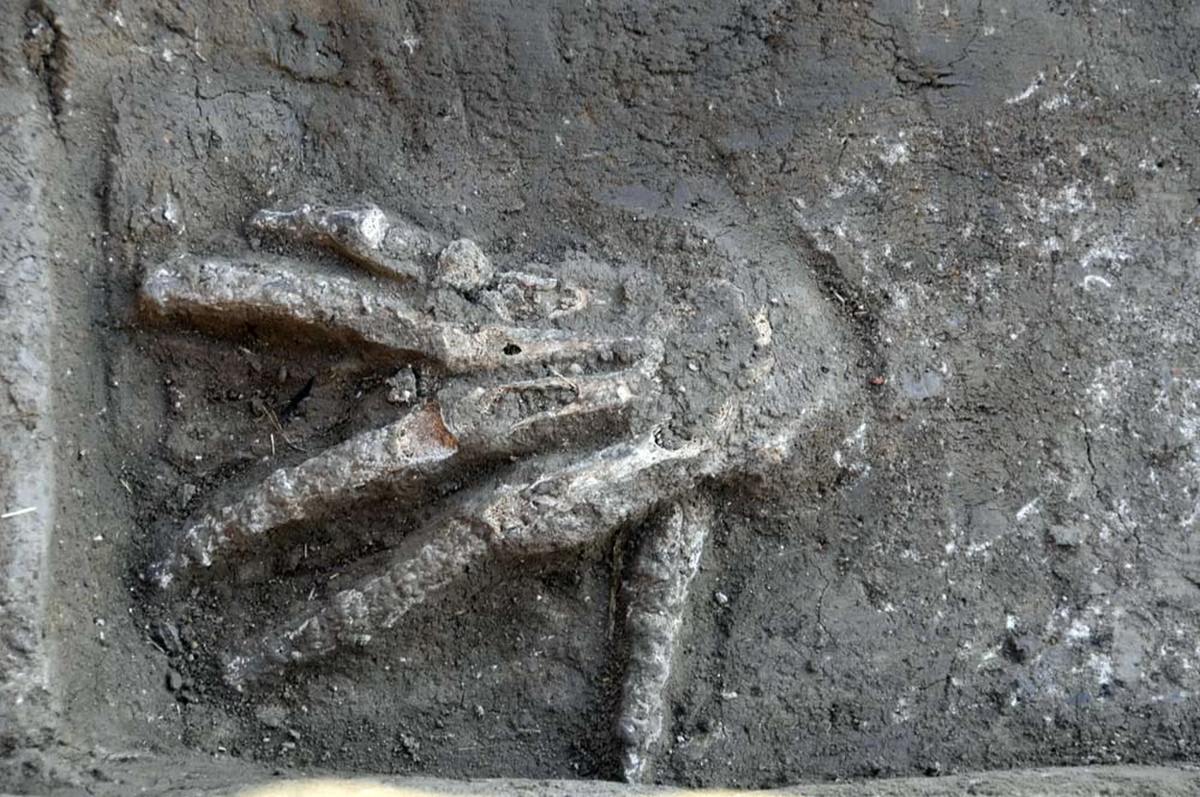|
Credit: Photo by Axel Krause Although the cutting hands have been evidenced in many Egyptian documents and also in art until recently there was no archaeological evidence that such practice really existed. However, when excavating the 3,600-year-old palace in the once-great Egyptian city of Avaris, archaeologists discovered four pits. In the pits there were human hands, but not their bodies. Two pits were discovered in the outer part of the palace, and two were directly in front of the throne room, indicating that they had a ceremonial significance. In the pits that were in front of the hall, there was only one hand, while the other fourteen hands were buried in the other two pits. It is believed that the discovered palace belonged to King Khayan of the Hyksos. In one period of Egyptian history, around 1650 BC the Nile Delta was invaded by Hyksos. It is believed that Hyksos came from North Hanan and, after defeating Egyptians, they established their rule and chose Avaris as their capital. They conquered most of Egypt, but formed their rule modeled on the rule of Egyptian pharaohs and adopted the customs of Egypt. However, among the Egyptians, Hyksos were hated. When Hyksos were expelled from Egypt, there was also an attempt to completely erase them from historical memory. Egyptian sources almost do not say anything about that period.
There is also an attempt to connect the palace in Avaris with Biblical Joseph, so some call it Joseph's palace and believe that the throne room belonged to Joseph. The discovery of twelve graves is used as an argument in favor of this claim. Besides, Bible depicts the custom of cutting off hands of the opponents. King David managed to become the king of Israel while his opponent, Eshbaal, son of the previous king Saul was defeated. David made the order to cut off his hands and feet: “And David commanded his young men, and they killed them and cut off their hands and feet and hanged them beside the pool at Hebron. But they took the head of Ish-bosheth and buried it in the tomb of Abner at Hebron.” Finding the severed hands is the first physical evidence of practice that is very common in ancient Egyptian art, in which soldiers cut off the right hand of the enemy and bring it in front of their leaders, who throw them in a special ritual in the pit, and they give each soldier a piece of gold as a reward for hand of the enemy. For the ancient civilizations, this practice was more than the mutilation of the human body because they were giving it a special symbolism. By cutting off the right hand of the enemy soldiers, they, in a symbolic way, depriving the enemy of the power. The depriving of power has had significance not only for the present but also for eternal life because, as they believed, an individual without a hand was powerless ever after. This belief is confirmed by the fact that all the hands belonged to the right arm. It is not entirely certain who started this practice of cutting off enemy’s hand. Egyptian sources before the Hyksos Invasion speak of it and it is possible that it originates from the Egyptians themselves. One of the ancient Egyptian objects, the 5,000 years old Narmer Palette, depicts Pharaoh with his enemies. Pharaoh is shown standing among the beheaded prisoners on one side of the object while in other he is lifting a mace in order to smash the head of a prisoner kneeling at his feet.
0 Comments
Leave a Reply. |
AuthorPhoenix Voyagers Archives
January 2023
Categories |
|




 RSS Feed
RSS Feed




